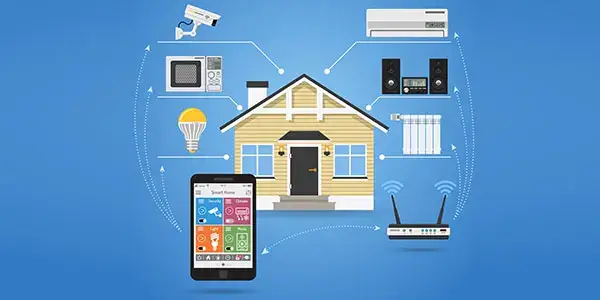In today’s fast-paced world, technological advancements can be seen in every aspect of our lives, making them more convenient. Everyone wants to use a simple voice command to turn on the lights and start their favorite playlist in the background. The pinnacle of convenience lies in home automation and the endless offerings it can boast.
We will take you through the process of planning your home automation system. This guide aims to help you create a cohesive automation ecosystem, regardless of whether you are a tech enthusiast or a newcomer to all of this technology. Hope that with the knowledge and insights gained, you will be able to transform your living space into a fully automatic smart house!
Understand the Various Systems & Devices Required
Before you actually go and begin your home automation, you need to assess your specific goals. You want to start small and consider the areas of your home that could benefit most from automation. Consider lighting, entertainment, and security systems for each room. By identifying your priorities and preferences, you can go ahead and streamline your daily routines.
Home automation systems range from simple setups to comprehensive ecosystems. Here are three primary types of home automation systems:
Stand-Alone Systems: These are individual devices that can be controlled independently of other systems. Smart thermostats and smart light bulbs are good examples of them. While they provide basic automation capabilities, they may or may not lack integration and an inclusive user experience.
Hub-Based Systems: Hub-based systems centralize control by connecting various smart devices to a central hub. This allows you to have seamless communication between a wide array of devices. This aids in creating a more integrated and robust automation ecosystem.
Cloud-Based Systems: These systems rely on cloud services to control and manage devices. They offer the advantage of easy access from anywhere, even if you are not at home; however, they may depend on an internet connection. Additionally, many people have some degree of privacy concerns regarding them.
Smart Devices and Integration
Selecting the right smart devices is also a crucial step for a successful home automation setup. Common smart devices to include are:
Smart Lighting: As you can tell, they control individual lights or groups of lights and can adjust brightness and set schedules.
Smart Thermostats: These devices monitor and control heating and cooling systems in a room or the house as a whole.
Smart Speakers and Voice Assistants: They help interact with your automation system using voice commands and can play music when requested.
Smart Cameras and Sensors: You need to be able to monitor your home’s security and environment, which makes these devices a must-have.
For all of these devices, you will want to ensure a seamless experience between using them and will want to prioritize devices that are compatible with each other. This will help you integrate them into a unified system.
Creating a Home Automation Plan
Designing a home automation plan will have you considering the layout of your home, the devices you want to incorporate, and the goals you want to achieve.
You should have a good map of all the devices that you want to incorporate, as well as how they will interact with each other. At this point, you will want to prioritize integration to avoid compatibility issues down the road.
Consider the user interfaces you will use to control your system and attempt to keep everything within one system of a particular brand. In some cases, you may want to make sacrifices on certain devices just to have better compatibility.
Installation and Setup
Once you have a clear plan in place, it is time to go ahead and install/set up your home automation devices. Follow manufacturer instructions carefully and ensure that devices are placed optimally. You will then have to configure each device according to your preferences and integrate them into your chosen control interface.
Alternatively, if you lack the expertise or do not want to risk any bad installations, it is better to have a trained professional install your devices. You can find plenty of such people on Leadar.
Security and Privacy Considerations
While home automation systems have numerous advantages, they also raise concerns about security and privacy. Devices connected to the internet may be vulnerable to hacking or unauthorized access. Here is what you need to do to mitigate any risks:
- Secure your network with a strong password and capable encryption.
- Regularly update the device firmware to patch security vulnerabilities.
- Disable unnecessary features that could compromise your privacy.
- Opt for devices with built-in security features.
- Enable Two Factor Authentication to ensure no one not a part of your ecosystem attempts to access your devices.
Troubleshooting and Maintenance
Home automation systems may encounter glitches or issues over time. You will need to stay informed about updates and new features for your devices and control system. If you encounter any technical problems, it is advisable to consult manufacturer documentation or customer support.
Regularly check your device performance and security settings to ensure the secure operation of your entire system. If you should encounter a physical problem, then it would be best to return the product and try to claim your warranty if it is still valid. Alternatively, you can send it back to the company for troubleshooting and repair, but this may end up costing you a fair amount.
Conclusion
If you are on the journey of home automation, you need careful planning and thoughtful consideration of your needs and vision for the systems you want in place.
With the rapid evolution of technology, the possibilities for creating your dream smart home are limitless, so go ahead and transform your living space into exactly what you envision in your dreams!
Home automation sounds fun and convenient but requires a lot of vigilance as well; otherwise, outside entities may interfere with your systems. Just make sure that you adhere to all the devices, their compatibility, and the security that they need.
